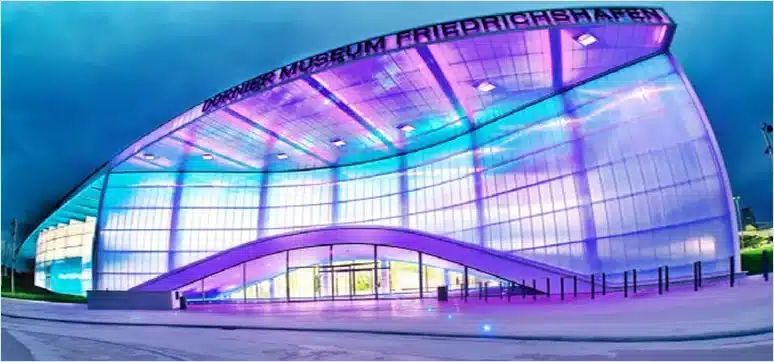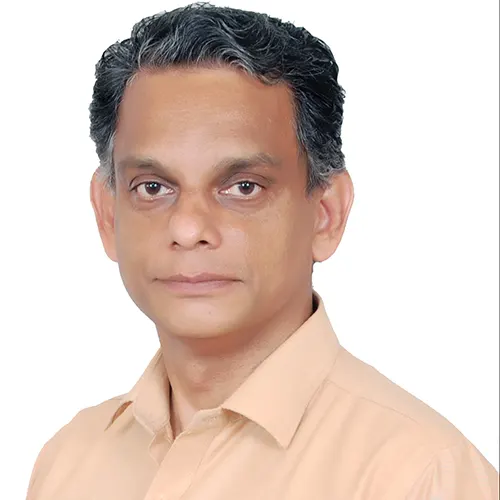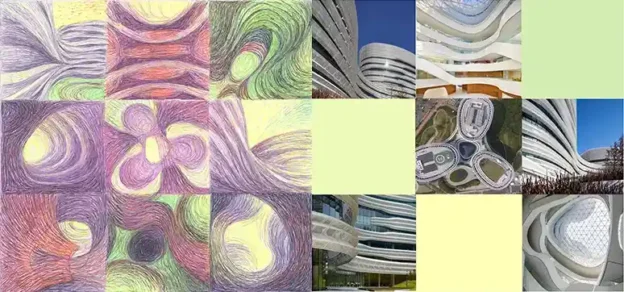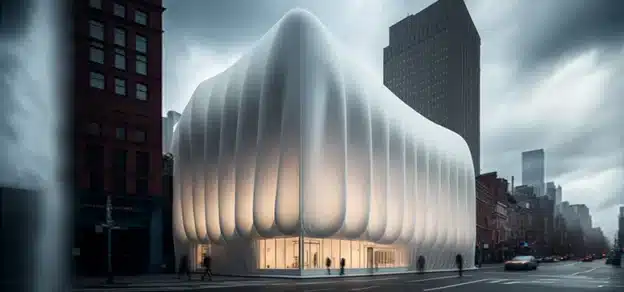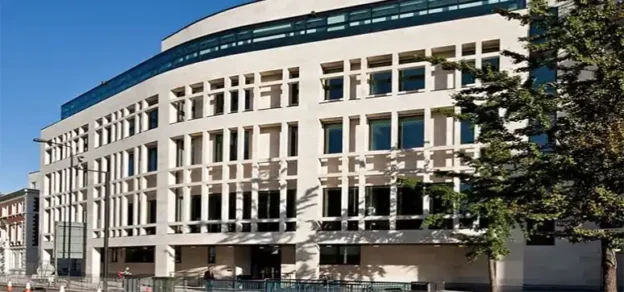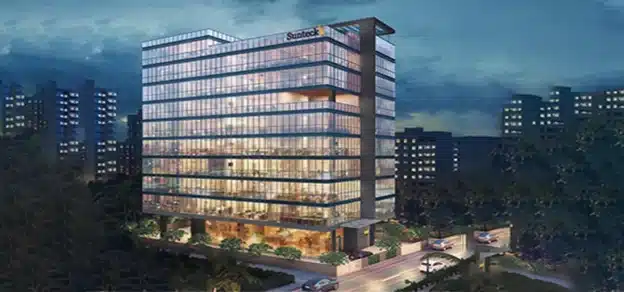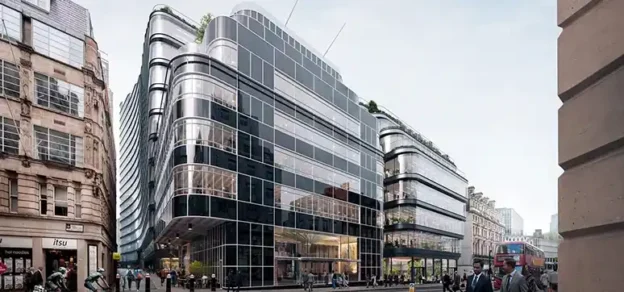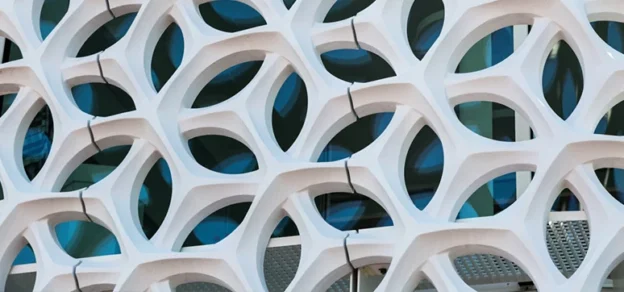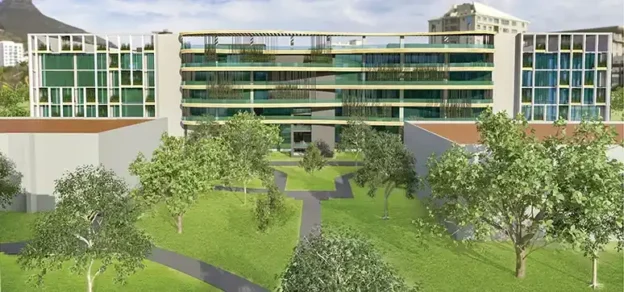The building façade, also known as the building skin and/or building envelope, has become popular in recent times. It is, however, not always considered an important and necessary exterior element of a building with aesthetic and functional purposes. Historically, the facade has been just a concrete cover of façade material on the structure. Only in the last decade, architects and designers have started to think or consider about this aspect of the building and focus on sustainable material procurement.
Façade is an independent frame made of Aluminium Composite Panel, double-glazed glass, pre-cast stone, natural stones or metal panels mounted and fixed in Galvanized Iron or on an Aluminium structure. The frame could be of a material alone or a combination of two materials. It is fixed with stainless steel components along with rubber gaskets, sealant, silicone gel, metal screws etc., on the beams.
The architect/designers divide the face of the building structure into two areas. First, is the vision area which is directly exposed to the sunlight, and hence the materials used here permit sunlight transmittance to the interiors. In short, it acts as a weather barrier against air and water infiltration and should transmit light to the interiors. The other part/ area is called the Spandrel area where horizontal and vertical beams appear. Here, the materials that are opaque in nature are mostly used.
The architect/designer along with the procurement specialist should sit and discuss the features of the façade for the building, considering the most important factors, before purchasing materials. These factors have an impact on the building, inhabitants and the environment. The factors need to be prioritized accordingly and should be treated as important before procuring the material and installing it on the building.

1. Lifespan/Durability of the Material
The lifespan of façade materials is the capability of the material to perform its required functions and not be required to get replaced within a short time. The client will be looking for a material that has a long lifespan with a minimum maintenance cost. In short, the material should not be replaced with a new one for its life period. Along with the durability of the façade material, the architect/designer has to consider the functional performance of the product. In simple words, if the material is of good quality product, it would perform well with few defects.
2. Cleaning Process
The second factor to be considered is about cleaning the façade. The taller the building, the more difficult it is to clean. There are, however, solutions for the process and should be done as per the proper instructions from the manufacturer. The process to clean the façade materials and to improve its aesthetic and functional performance is of prime consideration. Cleaning the façade material ensures a long life span of the material. Materials should be selected based on cleaning/maintenance capability.
3. Health and Safety
Another important selection criterion is the health and safety impact of the materials. The structure might be made of concrete and cement, but it can contain metals and chemicals that are harmful to the inhabitants. If the façade material is of low quality and does not fall under health regulations, or brings more complications to the living space, then it is to be avoided.
While selecting a façade material, the architect/ designer and the procurement specialist should read the instructions from the manufacturer. Verify that the product is certified by the Green Building Authority and other related authorities or governing bodies, and is able to withstand fire and maintain the required level of humidity inside the building.

4. Rate/Price of the Product
The price or cost of materials is a significant deciding factor. The architect/designer should convince the client to go for the product that has a longer life even if the price is high. The client might hesitate initially about the price of the material and demand products that are cheaper without considering the other side of the product like the life span of the product. The procurement specialist can do research on the material that gives the maximum performance or value while being economical. Educate the client that cheap is not always best!
5. Material Availability and Delivery Time
This is another important factor to be considered while selecting the façade material. A procurement specialist should always keep in mind these two concerns – material availability and time required to procure or lead time.
If the specified material is available in the local market, the procurement specialist should reserve the material by issuing a local purchase order along with an advance payment or just the local purchase order as mutually agreed by the seller and the specialist. Then there are no tensions and surprises.
When products have to be sourced from an international market, the procurement specialist should inform the architect/designer about the availability of international suppliers and the time required for the material to arrive in the local market. Sometimes, it takes more time if the international supplier doesn’t have the material. Then he/she might have to order it from the manufacturer or might have to manufacture it themselves. In both cases, the specialist should inform the architect/designer and also the client.
6. Thermal Properties of the Product
Another important selection factor is the thermal properties of the façade material. The façade materials are exposed to different weather conditions. It is a fact that the performance of the product changes accordingly due to climate changes and temperature. So the façade material should be selected carefully keeping this in mind. Weather conditions have to be accounted for. The Middle East has high humidity when compared to Europe. So façade materials should be chosen accordingly.
The LifeCycle Tower in Austria is the best example of Thermal Bridging and includes a building-integrated photovoltaic (BIPVs) system, green wall system and solar thermal panels. The surprising factor is that this tower has wooden panels and glass as façade materials while most modern facades use little or no wood at all.
7. Acoustical Performance of the Product
The acoustical or soundproofing performance of the façade product is also critical to the selection process. The product should minimize sound pollution in buildings in urban areas. The most used method of façade product is double-glazed glass filled with an inert gas like Helium, etc., which in turn supports minimizing sound pollution in noisy areas. The use of inert gas is that it can withstand any climatic conditions and temperature fluctuations. In some cases, customizing the shape of the façade is also used to reduce sound pollution.
Summary
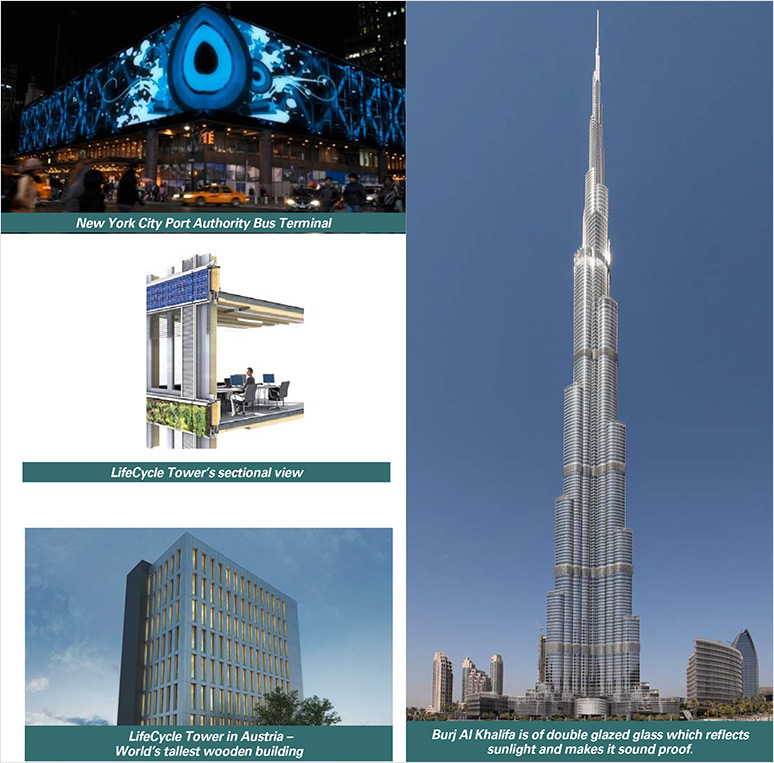
Façade materials should be chosen on the basis of many factors like the product’s value, lifespan, performance in different climatic conditions, availability, price, and health and safety measures. Rather than the price, the most important factor to be considered is the material’s durability and its contribution to the building’s performance. While trying to reduce costs, procurement specialists should not opt for cheap materials that will only increase the cost of building over time.
